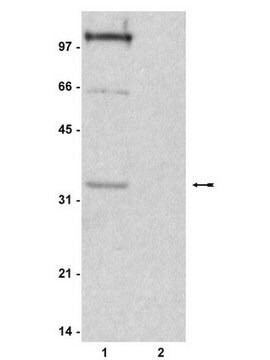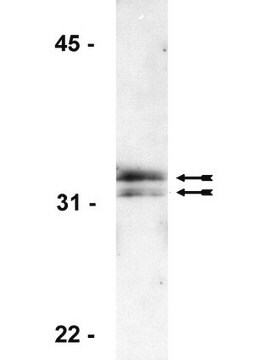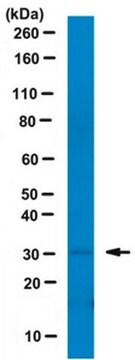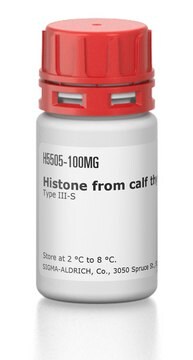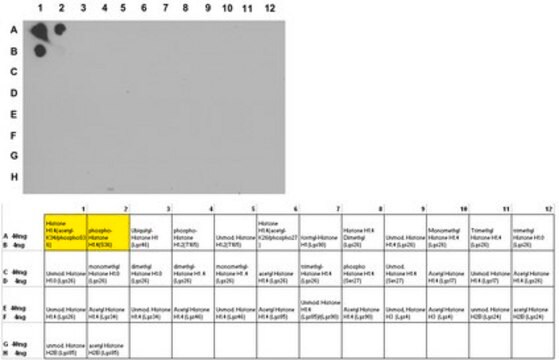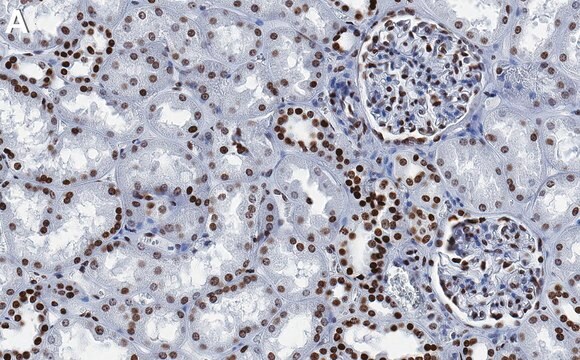05-1324
Anti-phospho-Histone H1 Antibody, clone 12D11
culture supernatant, clone 12D11, from mouse
Synonym(s):
H1 histone family, member 5, Histone H1a, histone 1, H1b, histone cluster 1, H1b
About This Item
Recommended Products
biological source
mouse
Quality Level
antibody form
culture supernatant
antibody product type
primary antibodies
clone
12D11, monoclonal
species reactivity
human, mouse, bovine, vertebrates
technique(s)
immunocytochemistry: suitable
immunohistochemistry: suitable
immunoprecipitation (IP): suitable
western blot: suitable
isotype
IgMκ
NCBI accession no.
UniProt accession no.
shipped in
wet ice
target post-translational modification
phosphorylation (not specified)
Gene Information
bovine ... H1-5(527304)
human ... H1-5(3009)
General description
Specificity
Immunogen
Application
Immunocytochemistry:
This antibody has been demonstrated by an outside laboratory to show positive immunostaining for phosphorylated histone H1 in HUSK (human fetal primary myoblasts) cells fixed with 3.7% paraformaldehyde followed by permeabilization with 0.2% Triton X-100.2
Immunoprecipitation:
This antibody has been demonstrated by an outside laboratory to immunoprecipitate phosphorylated histone H1 using solid phase beads bound to anti-mouse IgM.
Epigenetics & Nuclear Function
Histones
Quality
1:1000 dilution of this antibody detected Histone H1 in colcemid-treated HeLa lysate.
Target description
Physical form
Storage and Stability
Analysis Note
HeLa cell lysate, treated with colcemid.
Disclaimer
Not finding the right product?
Try our Product Selector Tool.
Storage Class
12 - Non Combustible Liquids
wgk_germany
WGK 1
flash_point_f
Not applicable
flash_point_c
Not applicable
Certificates of Analysis (COA)
Search for Certificates of Analysis (COA) by entering the products Lot/Batch Number. Lot and Batch Numbers can be found on a product’s label following the words ‘Lot’ or ‘Batch’.
Already Own This Product?
Find documentation for the products that you have recently purchased in the Document Library.
Our team of scientists has experience in all areas of research including Life Science, Material Science, Chemical Synthesis, Chromatography, Analytical and many others.
Contact Technical Service
